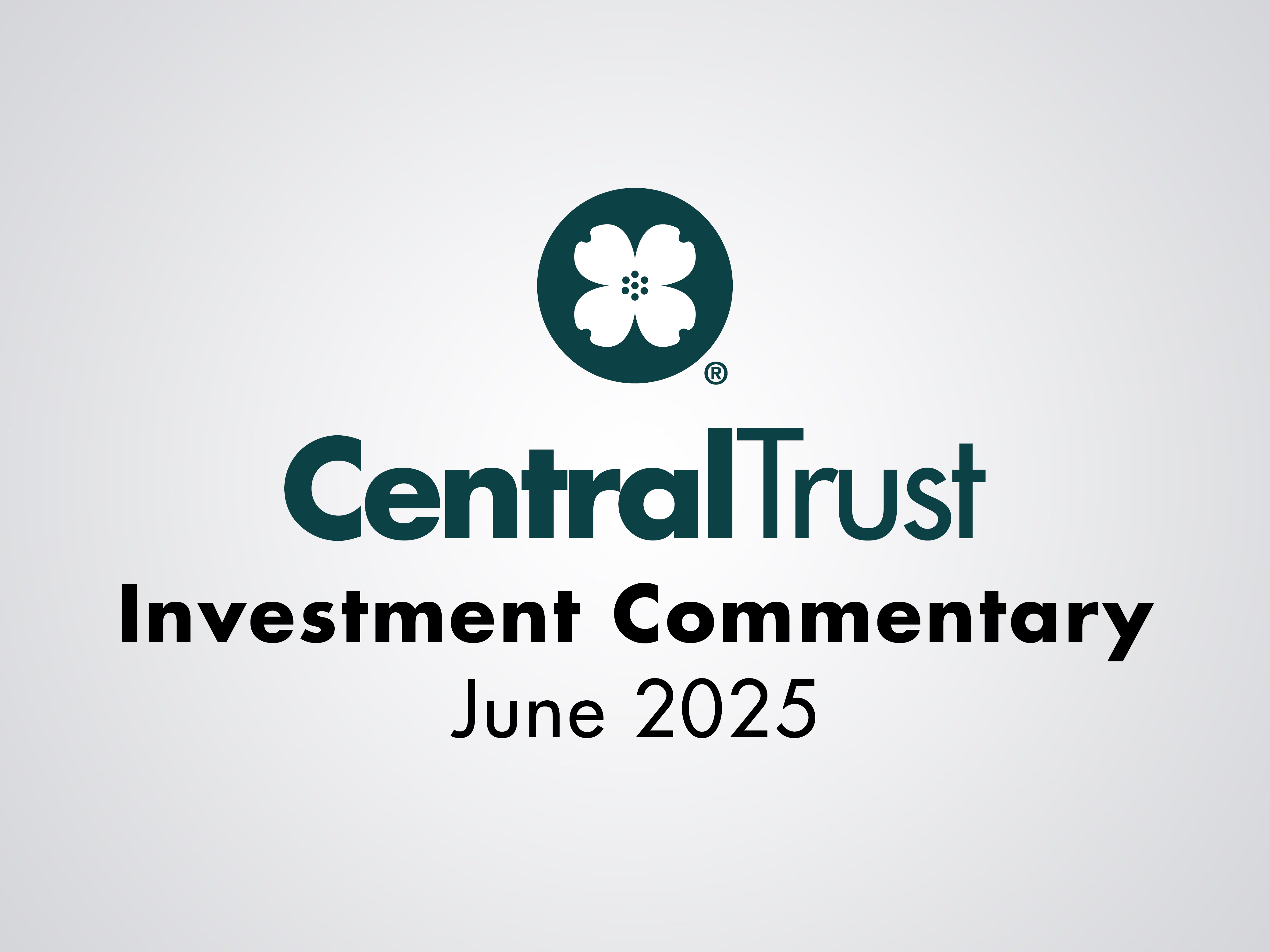June marked a second consecutive month of market gains as tech stocks led the rally, inflation cooled, and the Fed signaled a potential shift in policy.
Spring is a unique season, with a mix of cold and warm days, rain, occasional snow, and sunshine. The stock market felt similarly volatile in April. After the announcement regarding tariffs early in the month, the S&P 500 dropped significantly before rebounding to end the month down 0.68%. This brought the year-to-date total for the index to -4.92%.
Tech Leads, Energy Lags Among Large Cap Stocks
The large-cap U.S. index was led by the Information Technology sector, returning 1.62% for the month. Earnings resilience, particularly from artificial intelligence, helped boost returns. On the other hand, the energy sector was the worst performer, dropping 13.65%. Oil prices have been falling this year due to global growth concerns. Markets were further surprised when OPEC+ announced a production increase, pushing prices even lower. While this could lead to fuel savings and help ease inflation and tariff concerns, it also creates challenges for oil sector workers and investors.
Performance of Small and Mid-Cap Stocks
Small and mid-sized U.S. companies performed worse, with the Russell 2000 index down 2.31% in April. Like larger companies, these stocks were impacted by tariff and growth concerns. However, some optimism remains. Positive developments in trade negotiations and the ongoing Congressional debate over a major tax and spending bill, which includes a debt ceiling increase, could provide markets with more stable footing. Until policies are finalized, markets will likely remain volatile — driven by a mix of hope and fear.
International Markets Show Strength
Foreign stocks again outpaced the U.S. Developed markets and Emerging markets represented by the MSCI EAFE and MSCI EM indexes respectively returned 4.58% and 1.31% for the month; bringing the year to date returns to 11.76% and 4.28%.
The 16.68% performance difference in Developed markets and US Large Cap stocks may end up being a blip in history, but some investors see this as a long-term change in structure and sentiment. As more countries look to develop domestic industries, protect national security, and provide jobs, opportunities are presenting themselves.
Germany’s Economic Revival
Germany’s economy is showing signs of life after two years of stagnation and recession. This has been reflected in the MSCI Germany index returning 24.23% year to date. Fueling this optimism is a newly unveiled fiscal package, described as the country’s largest spending increase in over a generation, which has caught the attention of global investors.
Bond Market Update and Fed Outlook
The fixed income market also delivered a positive month. The Bloomberg Aggregate Bond Index returned 0.39% in April, bringing the year-to-date gain to 3.18%. Investors continue to monitor the Federal Reserve’s position closely. Although there has been speculation about potential interest rate cuts, such action appears unlikely in the near future. Market sentiment remains cautious, and concerns around global growth and trade policy continue to weigh heavily on investor confidence.
Mixed Economic Signals
Despite these headwinds, the broader economic picture shows a mix of signals. Unemployment remains relatively low at 4.2%. Consumer spending continues, and inflation is slowly trending downward. A sustained drop in oil prices could also help further reduce inflation over time. These factors reduce the urgency for the Federal Reserve to cut rates. However, elevated interest rates may begin to create broader economic pressures, especially as the national debt and deficit continue to expand. Worries that foreign bondholders could begin selling off U.S. Treasury holdings to push rates higher have added to overall market unease.
Deficit Concerns and Interest Rate Pressure
The U.S. federal deficit is projected to reach $2.7 trillion this year, up from $2.1 trillion in 2024. When paired with a potential $4 trillion increase in the debt ceiling and an additional $4.5 trillion in tax cuts, investor concerns about long-term fiscal sustainability are understandable. Bond investors are likely to scrutinize the spending cuts included in the pending tax legislation. If the overall package is perceived as unsustainable, upward pressure on interest rates is expected to intensify.
Precious Metals Continue to Surge
Precious metals continued their strong performance in April, rising 4.81% for the month. This brings the year-to-date gain to 23.93%, according to the S&P GSCI Precious Metals Index. Ongoing geopolitical instability and market uncertainty are driving increased demand for these assets as investors seek safe havens.
The Power of Diversification
So far this year diversification has played a pivotal role in protecting and growing investor portfolios. Much like a bouquet of flowers uses different colors, styles, and textures to deliver beautiful results, this spring the right mix of different assets appear to be serving up superior results.
Investment commentary by Jason Flores, CFA, CAIA – Executive Vice President & Chief Investment Officer and video by Matthew Suarez, AIFA®, CPFA® – Vice President & Portfolio Manager at Central Trust Company.
At Central Trust Company, we continue to reassess the rapidly changing investment landscape for both risks and opportunities. If you would like to access our full monthly outlook and additional investment commentary, visit our Investments Learning Center. As always, if you have questions or concerns, please contact your Central Trust Company team. We are always ready to help.


